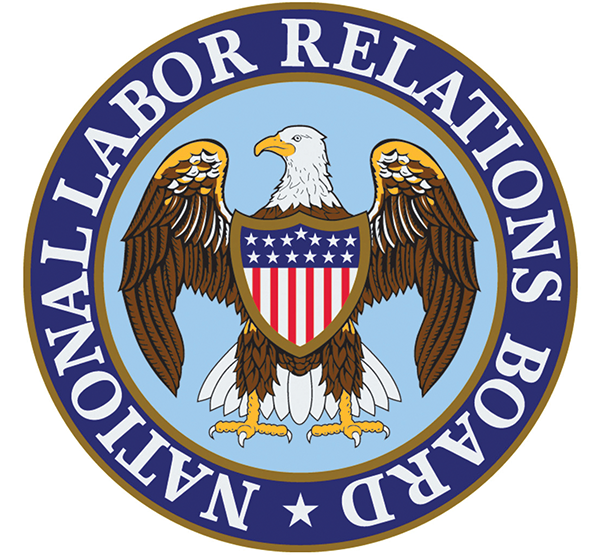NLRB rules employers may stop union dues collections

|
On Dec. 16, 2019, the National Labor Relations Board ruled employers may unilaterally stop deducting union dues from workers’ paychecks once a collective bargaining agreement expires.
The 3-1 ruling overturns an Obama-era decision requiring employers to continue deducting dues and transmitting them to a union after a labor deal ends. Most other terms of employment that require bargaining continue after a union contract expires.
The NLRB says contractual provisions governing automatic dues collection are in the limited category of mandatory bargaining subjects that only last for the life of a contract. It lists management-rights clauses, no-strike agreements and provisions requiring grievance arbitration of workplace disputes as similar bargaining subjects that can be changed without negotiation after a union contract expires, stating the “contractual origin” differs from employment factors present from the start of the bargaining relations, such as wages, hours and benefits.
According to the NLRB ruling, when a contract expires, so does the statutory obligation and statutory right to enforce it, and the status quo reverts to what it was prior to the contract.
The ruling means unions relying on automatic dues will have to collect them directly, and it is expected the decision will increase employers’ leverage during successor contract negotiations.
Lauren McFerran, the dissenting Democratic NLRB member, argued the origination of an employer’s dues obligations in a labor contract does not meaningfully separate them from other job terms that must be honored after deals expire. She says the dues ruling will empower employers, undermine unions and diminish the scope of collective bargaining.
New York laws mandate solar and/or vegetative roof systems

|
All newly constructed buildings and all buildings undergoing a complete roof system replacement in New York City must have a “sustainable roofing zone” covering the roof surface, according to www.habitatmag.com. New York City’s Local Laws 92 and 94, part of the Climate Mobilization Act, took effect Nov. 15, 2019.
A sustainable roofing zone is defined as a photovoltaic electricity-generating system, vegetative “green” roof system or a combination of both. Cooperative and condominium roof membrane replacements and patching projects—the most common roofing jobs in the city—are exempt from the laws.
Although the requirements for solar panels and the various exemptions are spelled out in the new laws, there is some confusion regarding what constitutes a green roof.
“The green roof must meet the requirements of New York City’s Building Code, Section 1507.16, which sets forth nationally recognized standards for green roofs,” says Andrew Rudansky, spokesman for the New York City Department of Buildings. “Those standards set requirements for green roof assemblies, such as the type of growth medium, depth, required drainage and types of plants that are acceptable.”
However, Alan Burchell, principal at green building technology provider Urbanstrong LLC, Brooklyn, N.Y., says the green roof section of the building code does not provide enough information because there are many types of green roofs and multiple factors involved. He says more details need to be provided.
“When somebody asks us for a green roof, the first thing we ask is what they want to achieve,” Burchell says. “Is their goal insulation and energy conservation? Are they aiming to manage stormwater runoff? Is it important to them to contribute to lower carbon-dioxide levels? How important is a habitat for birds and butterflies? Will they want or need an irrigation system? Maybe they want to incorporate decking, or agriculture? There are so many different options.”
The New York City Department of Buildings says clarification is forthcoming.
Federal regulations could cost $54.9 billion in 2020
If federal agencies finalize all proposed rules, the cost of new government regulations could reach $54.9 billion in 2020—the highest level under the Trump administration, according to an American Action Forum analysis shared with Bloomberg Law.
Immigration rule changes regarding asylum applications ($45.1 billion); immigration benefit request fees ($11.4 billion); and removing the 30-day requirement for Citizenship and Immigration Services to decide employment authorizations for asylees ($4.4 billion) are expected to cost nearly $61 billion based on compliance and other costs calculated by the administration.
Other regulations may create savings by offsetting some of the costs, but the current $54.9 billion expected would double the total regulatory cost from 2019. The remaining proposed rules would save $6 billion if finalized in 2020.
In 2019, the agencies that issued the costliest final rules were the Securities and Exchange Commission ($28.3 billion), Department of Treasury ($9 billion) and Department of Veteran Affairs ($2.3 billion). The most savings came from the Department of Labor ($7.9 billion), Department of the Interior ($1.5 billion) and Environmental Protection Agency ($1.2 billion).
American Action Forum Director of Regulatory Policy Dan Bosch says despite the increased costs of the new regulations, the Trump administration’s deregulatory efforts still are on track because those costs are significantly lower than under the Obama administration. The highest number the Trump administration has reached in one year to date is $27.3 billion while costs averaged about $110 billion per year during the previous administration.
Nearly 3,200 rules were published in 2019, and 20 of the rules made up 90% of all the estimated economic impact.
“This shows that the vast majority either have little impact or the government is not estimating the impact,” Bosch says.



